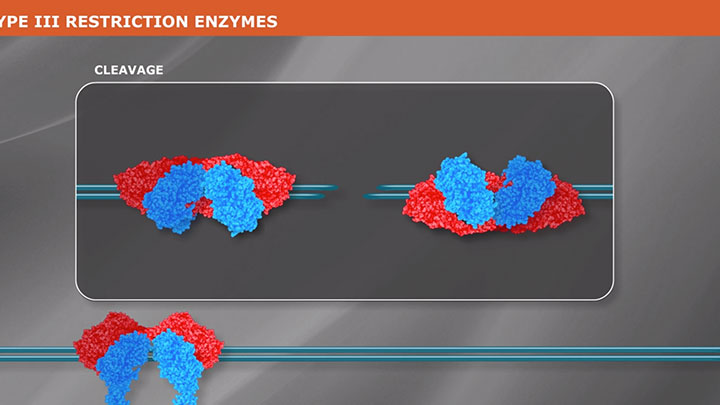What is a Type I Restriction Enzyme?

Script
Type I restriction enzymes consist of 3 proteins that function as a single protein complex. The complex typically consists of a Specificity protein, 2 Methyltransferase proteins and 2 restriction endonuclease proteins.
The Type I RM systems recognize a specific bipartite sequence, with the half sites separated by 5-8 non-specific nucleotides. They do not, however, produce a predictable cleavage pattern.
Once the protein complex binds the DNA, it acts as a molecular motor, using ATP to translocate thousands of bases along the DNA molecule until it encounters a second complex… at which point, it creates a double stranded break.
Because cleavage occurs after translocation, the cleavage site is not fixed. As a consequence, there is no distinct cleavage pattern.
In addition to the requirement for ATP, Type I restriction systems also require S-adenosyl methionine and magnesium ions.
At this time, there are no type I restriction enzymes that are commercially available
For more information about restriction endonucleases, visit www.NEBrestrictionenzymes.com, or go to REBASE, the restriction enzyme database, at REBASE.neb.com.
Related Videos
-

What are Restriction Enzymes? -

What is a Type II Restriction Enzyme? -

What is a Type III Restriction Enzyme?

